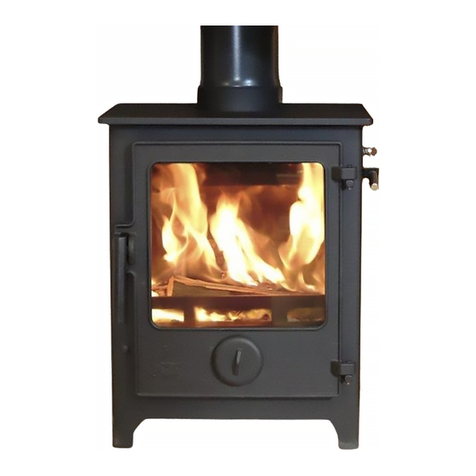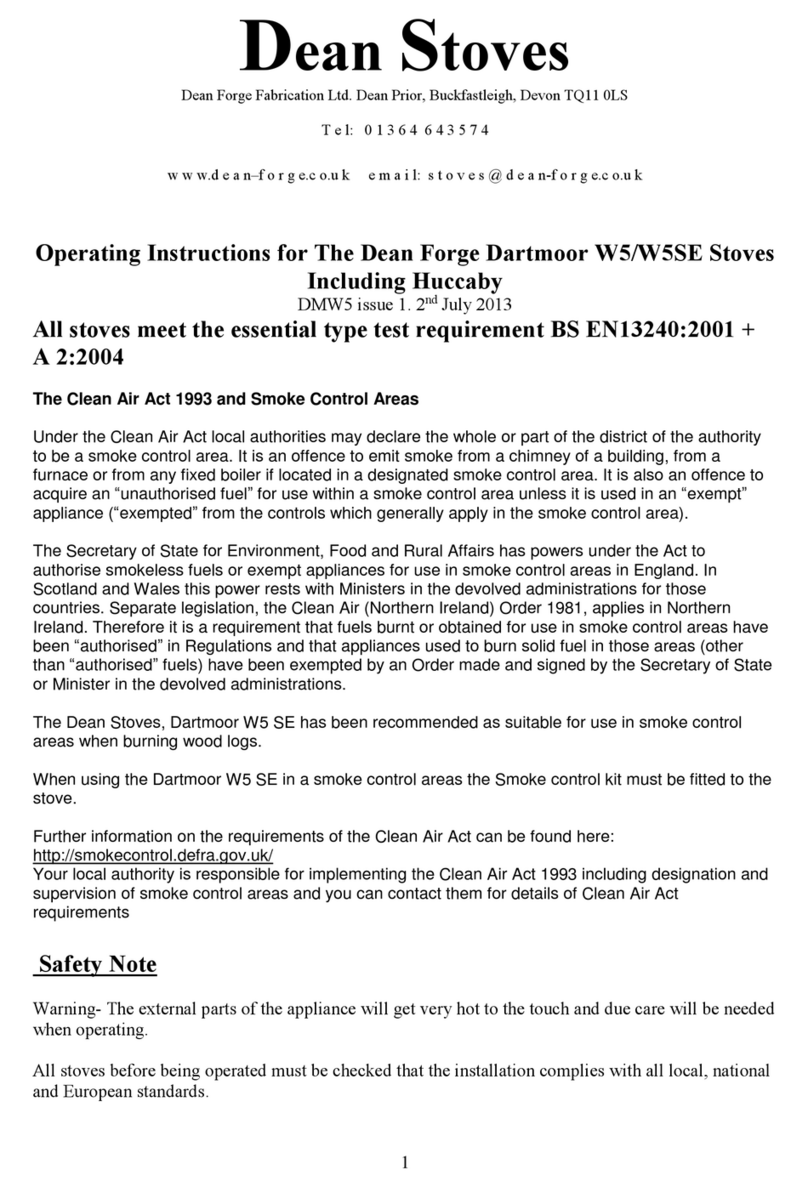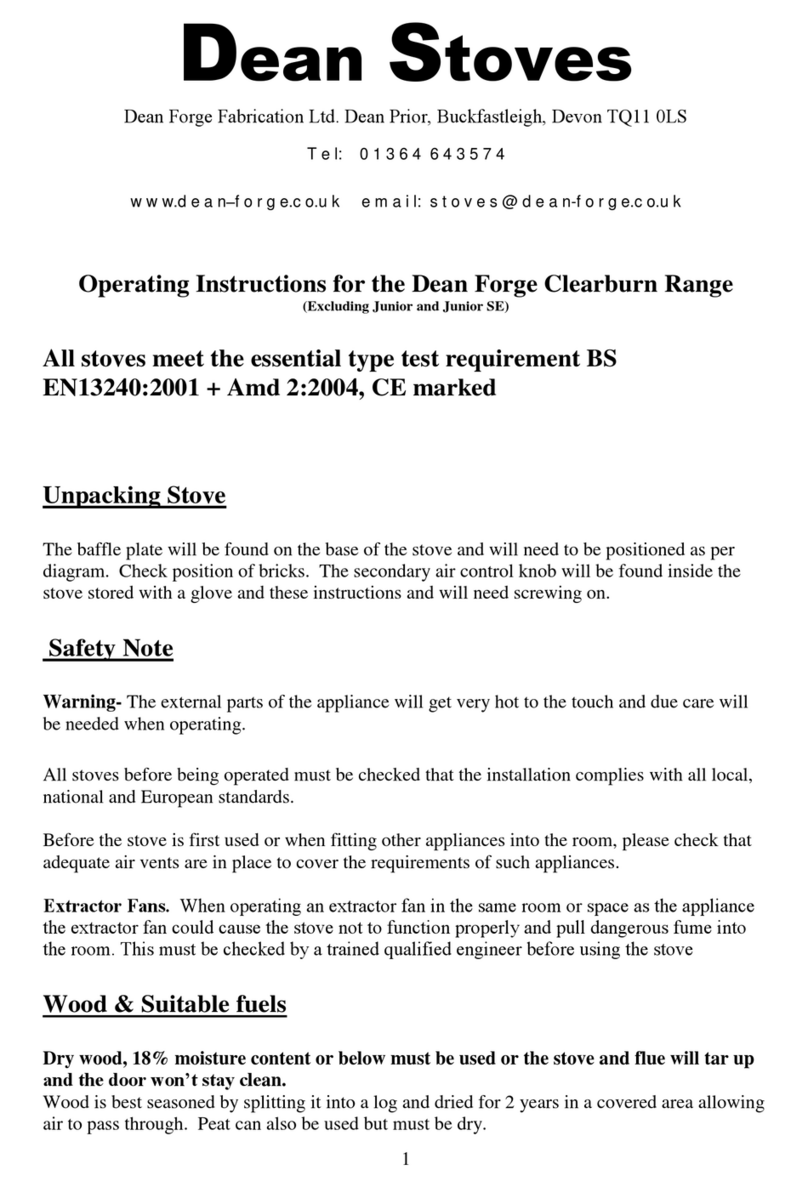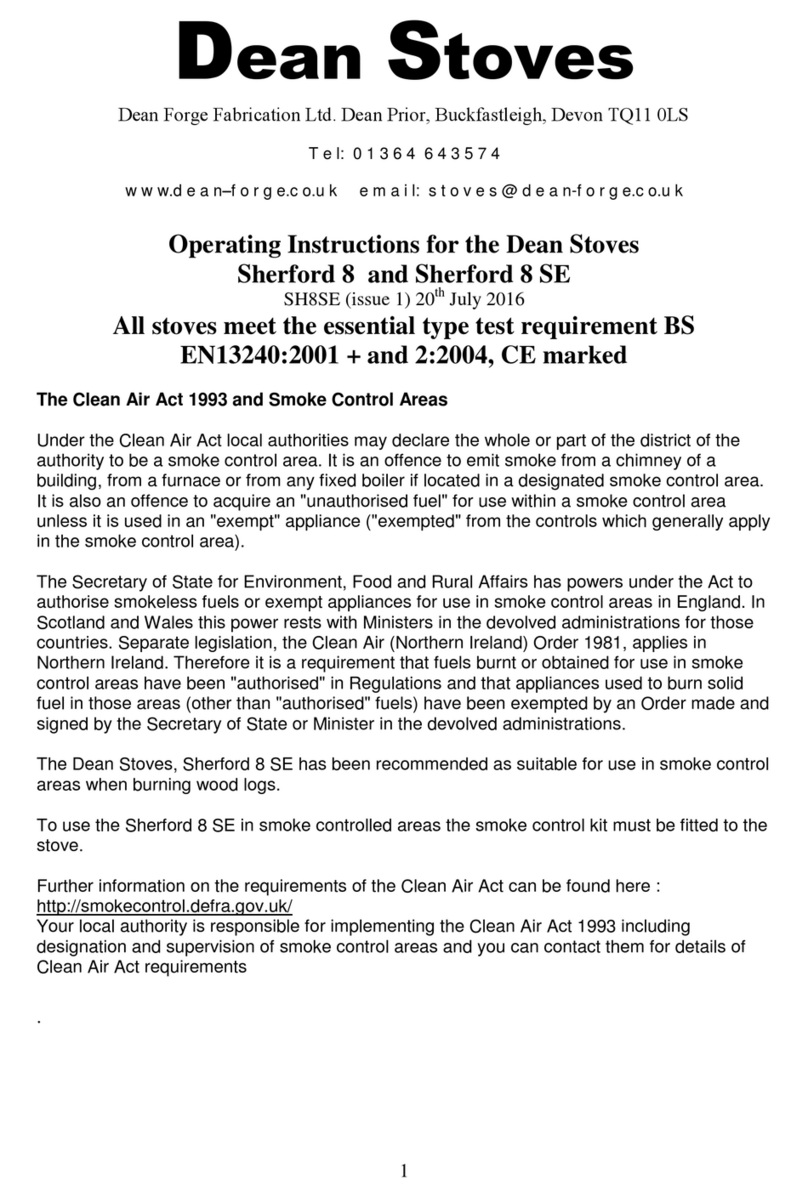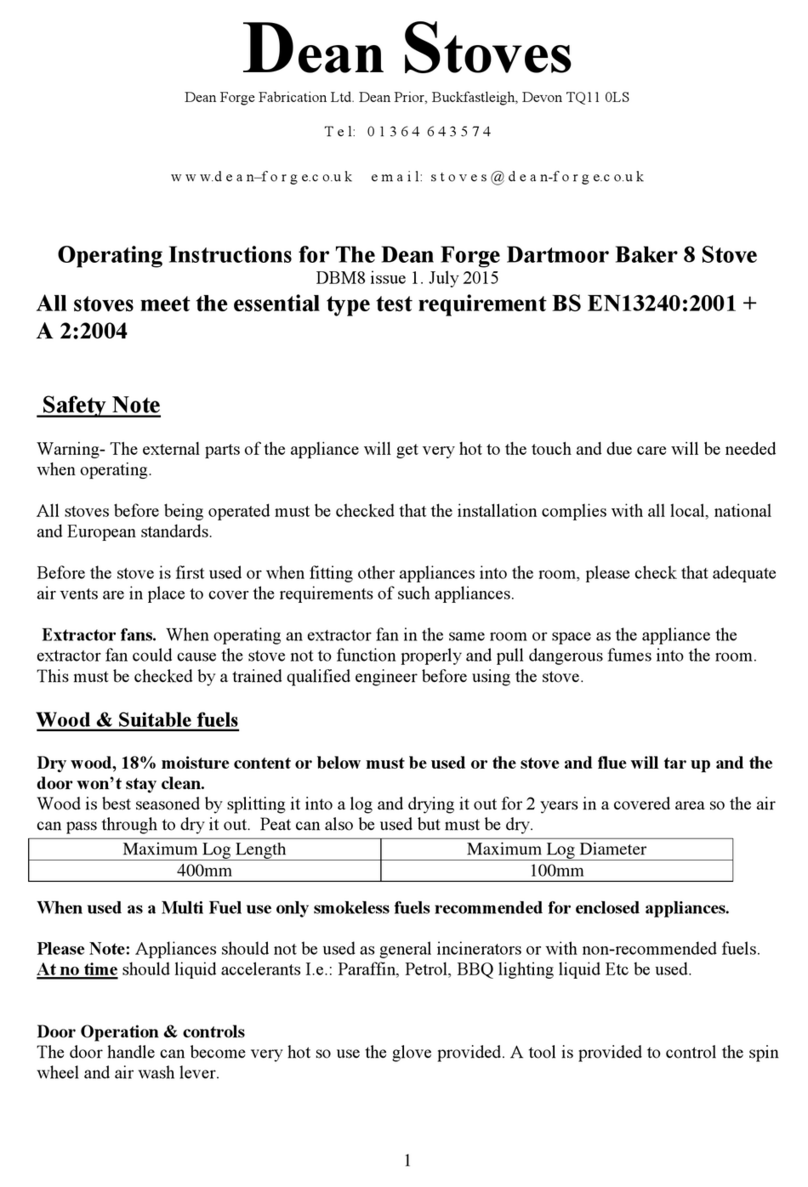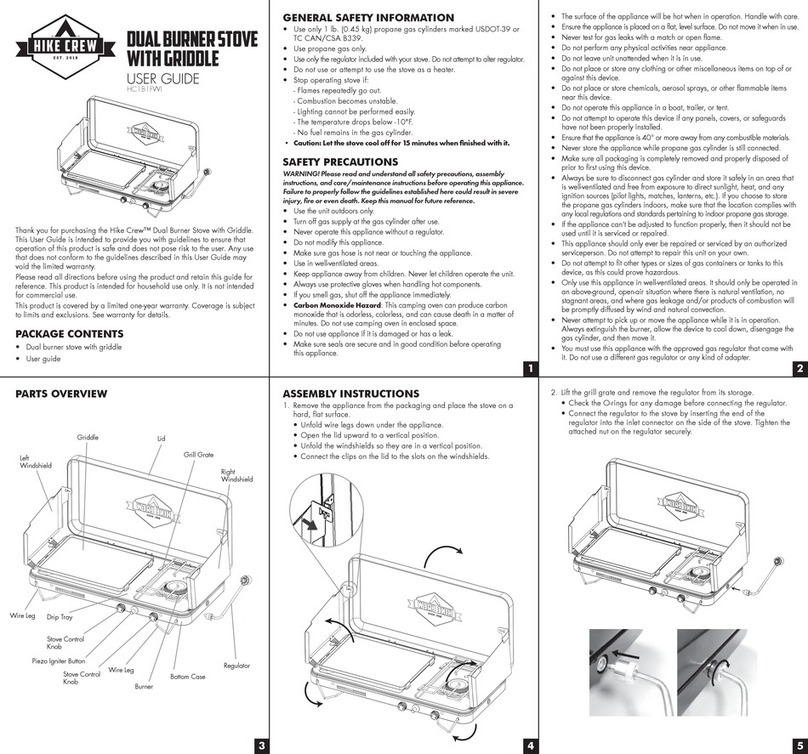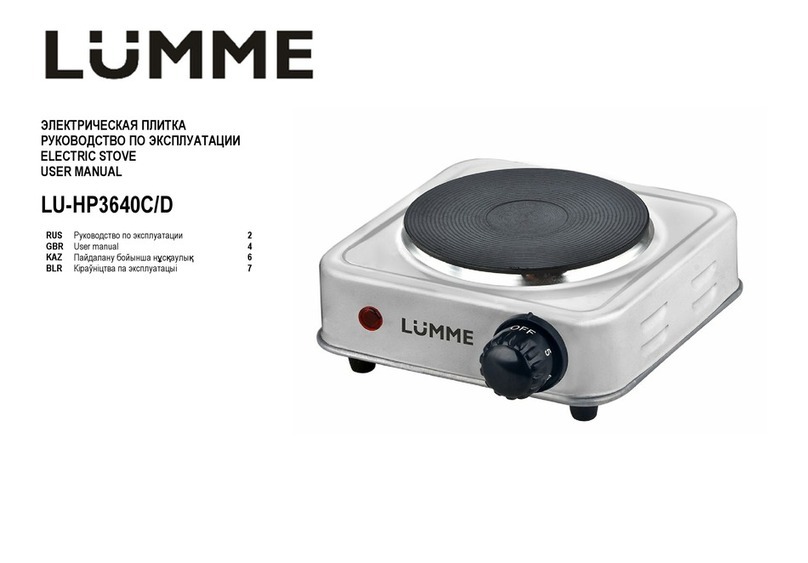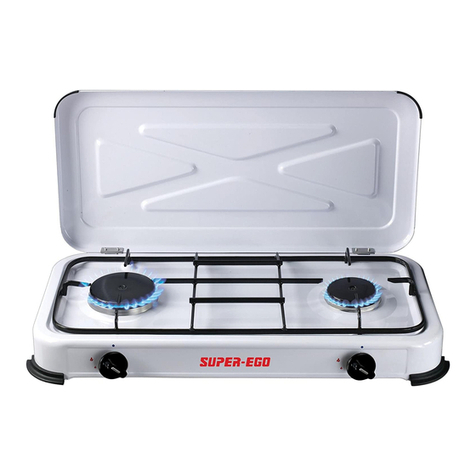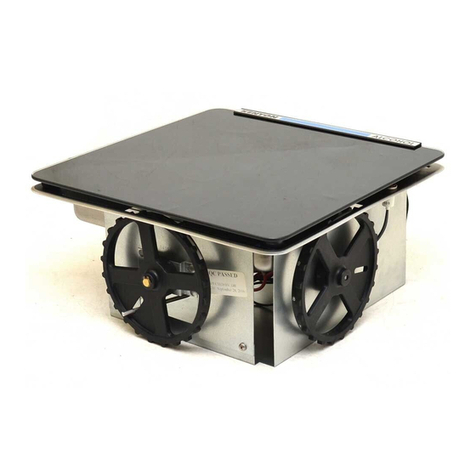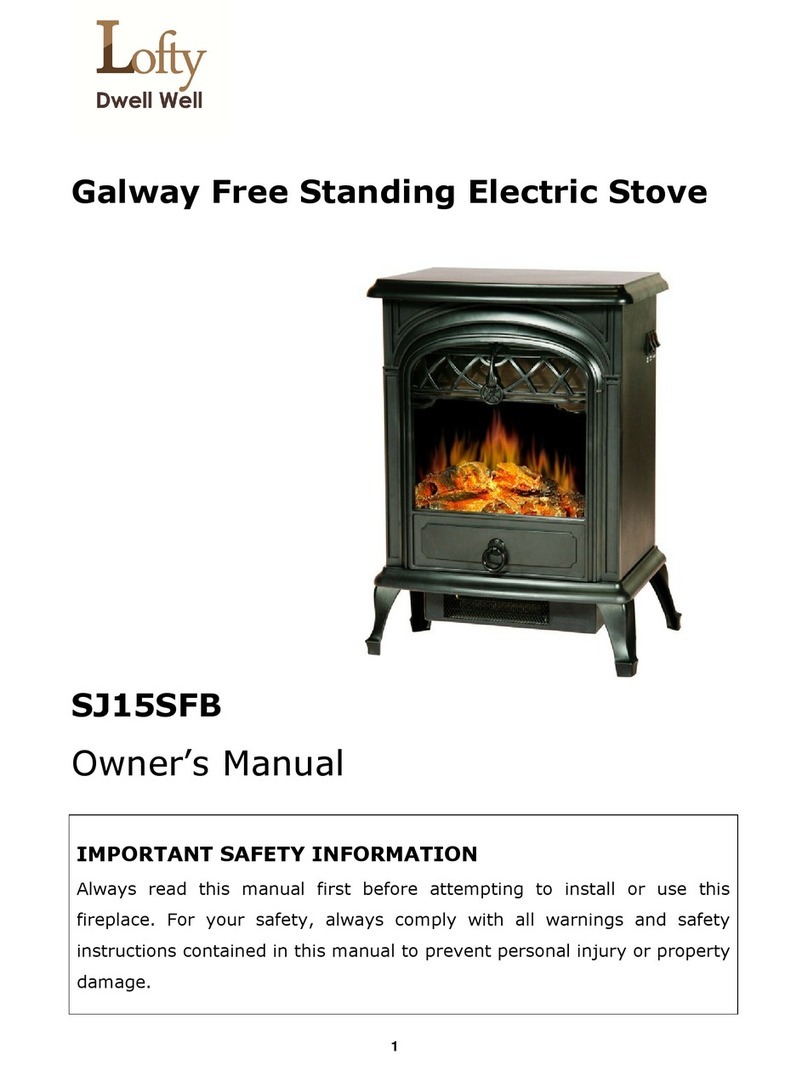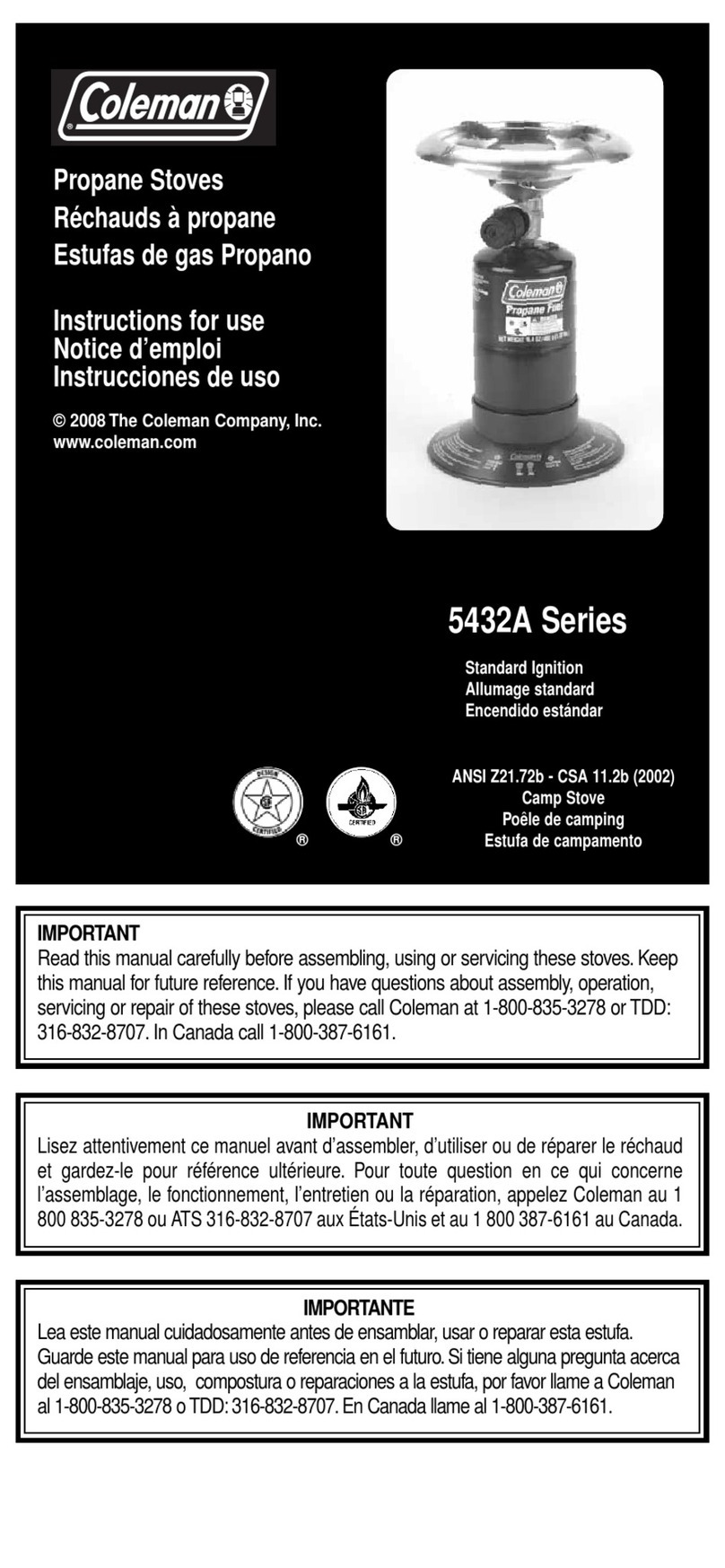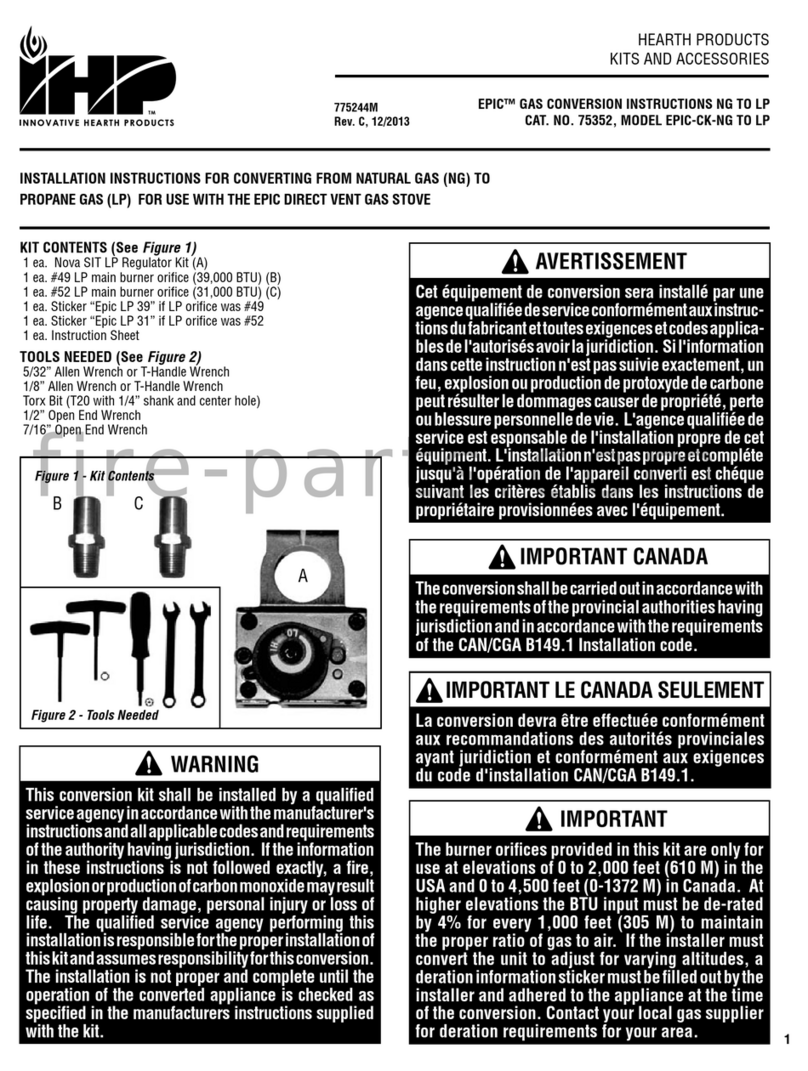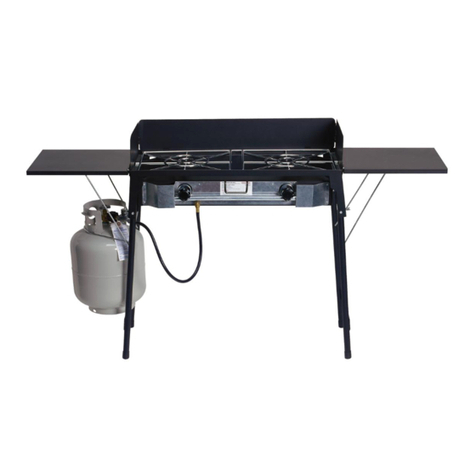Dean Forge Dartmoor Baker 5E Eco User manual

Page 1of 18
Dean Stoves
Dean Forge Fabrication Ltd. Dean Prior, Buckfastleigh, Devon TQ11 0LS
T e l: 0 1 3 6 4 6 4 3 5 7 4
w w w.d e a n–f o r g e.c o.u k e m a i l: s t o v e s @ d e a n-f o r g e.c o.u k
Operating Instructions for The Dean Forge Dartmoor Baker 5E Eco
and Dartmoor Baker W5E Eco Stoves
DMB5/DMBW5E issue 1. 21st October 2019
All stoves meet the essential type test requirement BS EN13240:2001 +
A 2:2004
The Clean Air Act 1993 and Smoke Control Areas
Under the Clean Air Act local authorities may declare the whole or part of the district of the authority
to be a smoke control area. It is an offence to emit smoke from a chimney of a building, from a
furnace or from any fixed boiler if located in a designated smoke control area. It is also an offence to
acquire an “unauthorised fuel”for use within a smoke control area unless it is used in an “exempt”
appliance (“exempted”from the controls which generally apply in the smoke control area).
The Secretary of State for Environment, Food and Rural Affairs has powers under the Act to
authorise smokeless fuels or exempt appliances for use in smoke control areas in England. In
Scotland and Wales this power rests with Ministers in the devolved administrations for those
countries. Separate legislation, the Clean Air (Northern Ireland) Order 1981, applies in Northern
Ireland. Therefore it is a requirement that fuels burnt or obtained for use in smoke control areas have
been “authorised”in Regulations and that appliances used to burn solid fuel in those areas (other
than “authorised”fuels) have been exempted by an Order made and signed by the Secretary of State
or Minister in the devolved administrations.
The Dean Stoves, Dartmoor Baker 5 Eco and Dartmoor Baker W5 Eco has been recommended as
suitable for use in smoke control areas when burning wood logs.
The Dean Stoves Dartmoor Baker 5 Eco and Dartmoor Baker W5 Eco is factory fitted with a
permanent stop to prevent closure of the secondary air control for use in a smoke-controlled area
Further information on the requirements of the Clean Air Act can be found here:
http://smokecontrol.defra.gov.uk/
Your local authority is responsible for implementing the Clean Air Act 1993 including designation and
supervision of smoke control areas and you can contact them for details of Clean Air Act
requirements

Page 2of 18
Safety Note
Warning- The external parts of the appliance will get very hot to the touch and due care will be needed
when operating.
All stoves before being operated must be checked that the installation complies with all local, national
and European standards.
Before the stove is first used or when fitting other appliances into the room, please check that adequate
air vents are in place to cover the requirements of such appliances.
Extractor fans. When operating an extractor fan in the same room or space as the appliance the
extractor fan could cause the stove not to function properly and pull dangerous fumes into the room.
This must be checked by a trained qualified engineer before using the stove. We do not recommend
installing a stove into a room where an extractor fan is installed.
Wood & Suitable fuels
Dry wood, 20% moisture content or below must be used.
Using wood with a moisture content above 20% will cause the stove to work inefficiently,
produce more smoke and particle emissions, it will also cause the stove and flue to tar up and the
door glass won’t stay clean.
Wood is best seasoned by splitting it into a log and drying it for 2 years in a covered area so the air can
pass through to dry it out. Peat can also be used but must be dry.
Maximum Log Length
Maximum Log Diameter
Dartmoor Baker W5 Eco
380mm
100mm
Dartmoor Baker 5 Eco
280mm
100mm
When used as a Multi-Fuel use only smokeless fuels recommended for enclosed appliances.
Please Note: Appliances should not be used as general incinerators or with non-recommended fuels.
At no time should liquid accelerants i.e.: Paraffin, Petrol, BBQ lighting liquid Etc be used.
Door Operation & controls
The door handle and air controls can become very hot so use the glove provided. Tools are provided to
control the spin wheel, air wash lever and the tertiary air slider.

Page 3of 18
Controlling the stove
Primary air control A is spin wheel on the door
The primary air control is a spin wheel on the door, this control is
used for lighting the fire or boosting the fire this also is the main
control when burning solid fuel when a multi-fuel kit in fitted.
Secondary air control lever B is situated on the right-hand
side near the top of the stove.
This lever controls the air wash and is used as the main air
control, when burning wood, once the fire is established.
Control lever B works as follows: -
For maximum air flow into the stove push the lever down to open
and up to close.
Tertiary air control slider C is used to open and shut the air
through the back of the stove.
This slider must be pushed fully in (push left towards the stove)
when burning wood and out (pull to the right away from the stove) when burning smokeless fuel. A
tool is provided which slots into the hole in the top of the slider. For safe access this slider should be
operated when the stove is cold.
Controls Left Open
Operation with the air controls open can cause excess smoke. The appliance must not be operated with
the air controls or door left open except as directed in the instructions.
Lighting the Stove with Wood
Lay a fire of sticks and paper. Firelighters can be used instead of paper. Check the secondary air lever
is fully open and the primary air spin wheel is partially open. Light the paper or fire lighter and as it
starts to establish a strong flame you may then fully open the primary air control.
When the fire has fully established and the logs are burning well, “this is usually about 10 to 20
minutes,” shut the primary air control and control the fire with the secondary air wash lever. If you are
unable to sustain the fire with secondary control it is very likely that your logs have a high moisture
content.
Refuelling
Before refuelling open the door very slightly for about 5 seconds to help any smoke or loose ash to be
drawn away from the door opening, then slowly open the door. Opening the door quickly can pull
smoke and ash into the room. After adding the new logs to ensure clean burning, the primary air
control should be opened for a couple of minutes until flames are established on the newly fuelled
logs. The primary air should be closed once these flames are fully established and the logs have
become blackened.
After refuelling, it is recommended that you do not leave the appliance unattended until it is certain
that the logs are burning well with a sustained flame.
Do not load the fuel above the log retainer or load logs that may roll forward onto the glass or out of the
stove if the door is opened.

Page 4of 18
Please note:
If there is insufficient burning material in the fire bed to light a new fuel charge, excessive smoke
emission can occur. Refuelling must be carried out onto a sufficient quantity of glowing embers and
ash so that the new fuel charge will ignite in a reasonable time, about one to two minutes. If there are
too few embers in the fire bed, add suitable kindling to prevent excessive smoke
Fuel overloading
The maximum amount of fuel specified in this manual should not be exceeded, overloading can cause
excess smoke.
The door should always be closed between refuelling to prevent fumes and spillage from the firebox.
When loading the fire be careful not to leave logs projecting over the log retainer as you may crack the
glass when closing the door, the glass also will become very black if a log is allowed to burn when
touching the glass.
The ash should be removed before it reaches the primary air holes (approximately 25mm down from
the bottom edge of the door aperture) which are situated along the inside front edge of the log retainer.
Always leave about 10mm of ash in the stove, this will help a new fire establish when next lighting the
stove.
In the summer or when the stove is not being used for a long period of time, clear all the ash out and
leave primary and secondary air vents open to prevent condensation which will corrode the inside of
the stove.
Lighting the stove with Solid Fuel and Multi-fuel kit fitted
Lay a fire of sticks and paper “firelighters can be used instead of paper”. Establish a fire and then add
the appropriate smokeless fuel, use the primary air control as the main control. When using a mixture
of wood and coal balance the primary and secondary control to achieve the desired flame picture.
When using solid fuel in this stove with a multi-fuel kit installed, you must only use smokeless fuel
recommended for enclosed appliances. Using the wrong fuel cannot only be dangerous but can cause
the glass to craze.
The Ash pan will need emptying once a day.
Please Note:
On lighting the stove for the first time from new the paint on the stove will cure and give off a metallic
smell. It is advisable to ventilate the room i.e. open the windows in that area. This will subside after
the stove has been burning hot for about 1 hour.
Baker Oven.
Before using the oven make sure the stove paint has fully cured.
All three baker stove models have an oven situated above the fire box which can be accessed via the
top oven door. The oven comes with a shelf that can be set in three positions, on the oven base, middle
or top support. When operating the oven suitable protective gloves must be used as the oven and shelf
can get extremely hot. Be careful that nothing falls out when opening the oven door.
The oven temperature can be regulated using the stove secondary air control. The temperature will
vary when using different fuels and fuel moisture content, a simple oven thermometer can help you
reach the required temperature.
An oven vent is situated in the top of the oven in a flue cleaning access plate. This vent should draw
unwanted cooking smells out of the oven and into the chimney. Do not block this vent off.
The top plate can be used as a cooking surface with the hottest area being near the back. Please note, if
you do wish to use the top plate for cooking the paint could scratch or become discoloured.

Page 5of 18
It is recommended that you clean soot and deposits that build up on the outside of the oven (in the fire
compartment.) The back and sides can be cleaned through the fire box, remove the baffle plate and
clean with a small long handled flue brush. Access to the top of the oven can be gained through the
cleaning access in the top of the oven.
The appliances have been assessed and are suitable for intermittent burning not continuous burning.
Operation with the door open can cause excess smoke. The appliance must not be operated with the
appliance door left open except as directed in the instructions.
Pre-Season Check:
The chimney needs to be swept at least once a year.
The chimney must be checked for blockages before lighting i.e.: bird’s nests
This is probably the time to have the chimney swept before the beginning of the season.
Before lighting at the beginning of the season or after prolonged shutdown periods, check the door
seals are in good condition; the steel insulating plates/fire bricks are in good condition and baffle plate
is in position.
If the stove has been used for a long period of time, we suggest the chimney be swept twice a year.
Notes
Down draughts or smoke in the room
In adverse weather conditions, a down draught may occur this could make the stove smoke into the
room. If this should happen shut all the stove air controls, open the windows and vacate the room until
the smoke has cleared. At all times consider the safety of yourself and others before taking the above
action.
Downdraughts are generally caused by adverse weather or could be poor flue draught or not enough
ventilation and not a fault with the stove. If this occurs on a regular basis call in your engineer.
It is possible a chimney cowl could cure this problem.
Air vents
If an air vent is installed check periodically that the internal and exterior ventilation grill is clear. It is
also good practice to check the air passage behind the vent covers as this can sometimes get blocked
up with spiders’ webs
Servicing
All servicing must to be carried out by a qualified competent engineer at least once a year.
No unauthorised modifications of the appliance should be carried out.
Use only replacement parts recommended by the manufacturer.
Fire Brick Lining
The brick lining in the stove will wear and cracks with use. Small crack will occur, this is normal. The
brick linings will only need replacing if they fall apart or are worn down to 50% of their original
thickness.
The brick linings, baffle plates, rope seals and grates are wearing parts of the stove and will need
replacing at times through the life of the stove. Keeping the brick linings in good condition and
replacing them when required will prolong the life of the stove.

Page 6of 18
Fault finding
If the stove starts emitting fumes into the room: -
(1) Check there are no blockage or restriction in the flue.
(2) Check the external air vent is not blocked.
(3) Check a baffle plate has not been dislodged.
(4) Call an engineer.
If the stove does not perform properly this could be due to unseasoned/wet wood, too much ash in the
firebox or poor flue draught.
In the event of a chimney fire
•Raise the alarm to let others in the house know
•Call the fire brigade
•Close down all the air controls of the stove, but be careful they could be very hot
•Move furniture, rugs and other objects away from the stove
•Check the chimney breast in other rooms for signs of excessive heat and move objects away if
necessary
•At all times consider the safety of yourself and others in taking the above action
Fitting Instructions for The Dean Forge
Dartmoor Baker 5 Eco and Baker W5 Eco Stove
(
Unpacking Stove
Remove all the polystyrene transit blocks holding the baffles. Check all the fire bricks and baffle
plates are in place and have not moved or been damaged in transit.
Inside the stove packed with these instructions will be gauntlet, a universal tool and a tool to operate
the tertiary air slider.
Before lighting the stove, you must check that the installation has been carried out as per instructions
and complies with current building regulations.
Health and Safety Precautions
All work must be carried out to the required Health and Safety at Work Act 1974.
We do not recommend installing a stove into a room where an extractor fan is fitted.
There must be an air vent for all stoves of 5 kilowatt and over or meet current building regulations.
Stoves must be fitted to BS8303, BS6461 PT1-2 1984 building regulations.
All local regulations, including those referring to national and European standards need to be complied
with when installing the appliance.
As with all stove’s, fireguards must be installed when young children are present.
N.B. A suitably qualified person must fit the stove. i.e. a HETAS engineer or with the supervision of
building control.

Page 7of 18
Chimney
The Dartmoor Baker 5 Eco and Baker W5 Eco models require a 125mm (5”) first length of flue then
stepping up into a minimum of 150mm (6”) liner. When using this stove with the smoke exempt air
stop fitted the flue liner can be reduced to 125mm (5”). We strongly advise a minimum diameter of
150mm (6”) flue liner be fitted when possible. The installation of a flue liner is recommended.
The chimney height must meet current building regulations.
These stoves are not suitable to be used in a shared flue situation.
The chimney must be sound and the flue not too large in section. If the existing flue is too large, a
liner will have to be fitted to reduce this flue size.
When the chimney is warm the draw must not be lower than 12PA with the door closed. If there is
excess flue draught a flue stabilizer might have to be installed.
It is recommended that this stove is fitted with a flue liner.
Hearth, Surround and Register Plate
The stove must stand on non-flammable material at least 12mm thick (1/2”). The hearth must extend a
minimum of 225mm in front of the firebox and 150mm to the sides. Due to some of the stove doors
being large we recommend that the hearth projects forward further than the above minimum, to help
prevent any ash on the door falling onto the floor when the stove door is opened.
If the stove is installed into a fire opening made of non-combustible materials, we recommend a
minimum of 150mm gap to the sides, 300mm above and 50mm behind the stove. For minimum
distances to combustible material see below.
The both the Dartmoor 5 and W5 must be installed on a constructional hearth if a base plate protector
is not fitted to the stove.
We recommend that any Dartmoor stove fitted onto a heat sensitive hearth such as slate or marble to
have a base plate protector fitted to help prevent the hearth cracking. The Huccaby and the Foxworthy
do not require further heat shielding. Do not store wood or flammable materials under any stove
including the Foxworthy and the Huccaby.
** Please note a single heat shield is fitted to the appliances as standard and therefore is
considered to be the back of the appliance. All distances to the rear must be taken from the back
of the nearest heat shield to the combustible materials directly behind the stove.
See diagrams on next page
Stove Type
Minimum from back
of appliance to
combustibles
With spigot shield
fitted **
Minimum from side of
appliance to
combustibles **
Minimum from back of
appliance to
combustibles with
double heat and spigot
shield fitted **
Dartmoor 5 Eco
150mm
400mm
--------------------------------
Dartmoor W5 Eco
200mm
350mm
50mm

Page 8of 18
Corner installation from Rear and side wall installation
combustible walls from combustible walls
Spigot Shield
The minimum distances to combustible materials have been tested and approved when a spigot shield
is fitted to the top of the heat shield. The spigot shield must be fitted to achieve these distances. The
spigot shield “which is in the glove pack”fits to the top of each heat shield projecting up using the two
screws which are located in their holes at the top of the stove heat shield. See diagram below
Baffles
Once all the packaging has been removed and the stove is in its final position you must make sure all
the fire bricks and baffles plates are in place. Particular attention must be taken when checking the top
baffle plate is in place. See diagram below.
.
The Top vermiculite baffle sits on a ledge across the front and on an angle bracket to each side
towards the rear. If the top baffle has a section cut out this must be positioned with the cut out at the
rear.
The lower baffle on the W5 is steel with a vermiculite brick that sits inside to the top face. The steel
section is held up by the two outer bricks to each side and the steel ledge to the rear of the stove. The
folds in the steel baffle must point up and the vermiculite brick sits between the folds.
The Dartmoor 5 lower baffle is vermiculite only which is also held up by the two outer bricks to each
side and the steel ledge to the rear of the stove.

Page 9of 18
Flue Connections and Outlets
Flue Connections and Outlets
Dean Stoves can be flued from the top and the back, or with a vertical back box. Horizontal flue from
back of stove should not exceed 150mm.
.
Diagrams showing the flue outlet from the top (A), back (B) and back box (C)
All flue connections must be sealed with fire cement. Doors in the register plate must be present or a
soot box fitted in the back or side of the fireplace to enable access to clean the chimney when the stove
is installed without a liner.
If the chimney has been lined and cannot be swept through the stove an access door on the first length
of flue must be installed for cleaning access. When using a back box the correct Dartmoor baker back
box with a cleaning access must be use.
Leg Adjusters
To level the stove there are leg adjusters on each leg of the stove, a 13mm spanner will be required to
make any adjustment.

Page 10 of 18
Stove Performance
(MSF –Manufactured smokeless fuel)
Pre –Lighting Check and Commissioning
Check all Building Regulations have been adhered to.
The baffle plates are in the right position.
A smoke test has been done to check the chimney is clear.
Take a flue draught reading and make sure it meets the requirements for the stove.
Data Plate
All stoves are numbered and performance marked on a data plate which is found on a swinging arm
located in the middle front at the base of the stove.
Air Vent
Under part J of building regulations an air vent of the appropriate size must be fitted for all stoves with
a kw rating of over 5kw.
In very air tight properties designed with air permeability less than or equal to 5.0 m3/ (h.m2) per
hour, an air vent will need to be fitted for all kilowatts.
When fitting air vents any other appliance fitted within the room must be taken into account.
Please Note: Extractor fans when operating in the same room or space as the appliance may cause
problems. Extra air venting must be in place to counteract this affect.
Air vent inlet grills must not be inadvertently blocked.
Air vents must not be fitted in positions where they can be inadvertently covered up.
As from the 1st October 2010 a compliant Carbon Monoxide Alarm must be fitted
Operation with the door open can cause excess smoke. The appliance must not be operated with the
appliance door left open except as directed in the instructions.
Appliance
Dartmoor Baker 5 Eco
Dartmoor Baker W5 Eco
Fuel
Wood
MSF
Wood
MSF
Total Efficiency
%
82.1
80.7
83.1
79.7
Nominal heat output
kW
5.0
5..0
5.0
5.0
Mean CO emission (at 13 % O2)
%
0.08
0.12
0.11
0.08
Mean flue gas temperature
ºC
250
269
249
261
Flue gas mass flow
g/s
4.0
3.9
3.8
3.4
Mean CnHm(at 13 % O2)
Nmg/m3
108
55
92
21
Mean NOx (at 13 % O2)
Nmg/m3
106
97
96
110
DIN Plus dust (at 13 % O2)
Nmg/m3
24
26
10
18
Appliance weight

Page 11 of 18
Installing a Multi-fuel kit in a Dartmoor Baker 5 Eco.
To install a multi-fuel kit into a Dartmoor Baker 5 woodburner first remove the inner side bricks by
lifting the baffle plate up on one side above the side brick then slide the side brick out being careful
not to damage it. This needs to be repeated on the other side but this time you must hold the baffle
plate to stop it falling out. Once both side bricks are removed the baffle plate can then be removed as
well as the log retainer. Remove a cover bolt, where the riddle bar will be fitted, which is on the left
side on the outside face of the stove the nut is on the inside.
Dartmoor Baker 5 Eco with Multi-fuel kit installed
Now you are ready to install the multi-fuel kit.
1. Fit the main grate frame (C) with the legs at the back of the stove, slide the frame forward making
sure the front of the frame sits on the brackets which are each side near the front of the stove.
2. Unscrew the stainless-steel knob (J) off the riddle bar and hook the bar through the hole in the
arm of the centre grate (D) making sure the riddle bar sits under the centre grate arm.
3. Fit the centre grate (D) with the arm pointing to the left and feed the riddle bar through the hole
in the front of the stove.
4. Re-fit the baffle plate (B) using the new shorter side bricks.
5. Fit the rear infill plate (E). The support bar welded to one side points down and sits against the
back of the main grate frame the other side leans against the rear brick.
6. Fit the new fuel retainer making sure the bars sloping down, away from you towards the grate.
7. Fit the ash pan (I) under the fire grate.
8. Fit the door rope seal. Remove the two bottom door glass retainers (be careful the glass does not
fall out). Slide the two glass retainers into the two cut-outs between the channel and the rope
seal. Ease the rope slightly back to locate the glass retaining screws through the retainers and the
holes in the channel. Screw the channel/rope seal to the door with the glass retainers pointing up
to hold the glass in place. Gently push the rope seal back over the screw in the channel

Page 12 of 18
Installing a Multi-fuel kit in a Dartmoor Baker W5 Eco.
To install a multi-fuel kit into a Dartmoor Baker W5 woodburner first remove the inner side bricks by
lifting the baffle plate up on one side above the side brick then slide the side brick out being careful
not to damage it. This needs to be repeated on the other side but this time you must hold the baffle
plate to stop it falling out. Once both side bricks are out the baffle plate can then be removed as well as
the log retainer. On each side of the base of the stove there are two bolts that need to be removed, this
requires a 17mm spanner or socket. The stove is now ready to accept the multi-fuel kit.
Dartmoor Baker W5 Eco with Multi-fuel kit installed
Now you are ready to install the multi-fuel kit.
1. Bolt the two grate supports (G) by bolting them through the base holes each side. Make sure the
inside nut is adjusted so when the lower nuts are tightened the brackets are not digging into the outer
side brick. The side bricks should just move when the nuts are tight.
2. Fit the new fuel retainer making sure the bars sloping down, away from you towards the base of the
stove.
3. Slide the fuel retainer (B) up then slide the fire grate (A) under the fuel retainer and on top of the side
brackets (G) with the lip on the grate to the front and pointing up. Slide the fuel retainer back down to
sit on the fire grate
4. Re-fit the baffle plate (E) using the new shorter side bricks.
5. Fit the sloping thicker multi-fuel bricks (C) to each side of the fire grate.
6. Fit ash pan (F) under the fire grate.

Page 13 of 18
EC Declaration of Conformity
The Undersigned, representing the following:
Manufacturer
Dean Forge Ltd
Dean Prior, Buckfastleigh, Devon, TQ11 0LS
Herewith declare that the products:
Description
Product Code
Dartmoor Baker 5 Eco
STDFEDDAB5
Dartmoor Baker W5 Rco
STDFEDDABW5
Description of product:
Dartmoor wood and multifuel heating stove product range.
Steel bodied stove fitted with cast iron doors. Supplied in various sizes to give a range
of heat output options.
Are in conformity with the provisions of the following EC Directive (S) when installed
in accordance with the installation instructions in the product documentation:
98/106/EEC- 305/2011 Construction Products Directive
And the standards referenced below have been applied:
EN 13240: 2001 + Amendment A2: 2004 & inset BS EN13229:2001 + A1: 2003 + A2:
2004

Page 14 of 18
Provisions to which the product conforms:
Product: Roomheater fired by solid fuel as covered under the scope of the standards listed.
Intended use: Space heating in residential building.
Characteristic
Performance
Report
Fire Safety
Satisfies
Dartmoor 5- STDFEDDAB5
Co @ 13% 0² Wood 0.08% Ancit 0.12%
5Kw @ 82.1% Wood -5Kw @ 80.7% Ancit
Dartmoor W5- STDFEDDABW5
co@ 13% 0² Wood 0.11% Ancit 0.08%
5Kw @ 83.1% Wood -5Kw @ 80.3% Ancit
Release of dangerous
substances
None
Surface temperature
Satisfies
Mechanical resistance (to
carry a chimney/flue)
Maximum weight to be supported 30Kg
Test laboratory: 0692
Name: M.P Chew Signature:
Position: Technical Director (s) Date: 23rd October 2019

Page 15 of 18
A+
5.0
n/a
73.1
83.1
Product Fiche according to Commission Delegated Regulation
Nominal Heat Output to Room (KW)
Nominal Heat Output to Water (KW)
Dean Stoves
(EU)2015/1187
Seasonal Space Efficiency (%)
Net Efficiency (%)
Supplier's Name
Model
Energy Efficiency Class
Energy Labelling of Local Space Heaters
Dartmoor W5 Eco
A+
5.0
n/a
72.1
82.1
Seasonal Space Efficiency (%)
Net Efficiency (%)
Supplier's Name
Model
Energy Efficiency Class
Energy Labelling of Local Space Heaters
Product Fiche according to Commission Delegated Regulation
Dartmoor 5 Eco
Nominal Heat Output to Room (KW)
Nominal Heat Output to Water (KW)
Dean Stoves
(EU)2015/1187

Page 16 of 18
DMB5/DMBW5E issue 1. 21st October 2019
THE DEAN FORGE FABRICATION LTD STOVES GUARANTEE
Dean Forge Fabrication Ltd offers a five-year guarantee which covers the main body of the
stove for manufacturing defects.
In the event of a manufacturing defect we will replace any defective part free of charge, labour
cost excluded.
This guarantee is invalid if the stove is not assembled, installed or operated as per these
instructions or properly maintained or does not comply with current building regulations and
any regional legislation in force at the time.
Dean Forge Fabrication Ltd does not guarantee the onsite assembly, installation or operation
of the stove. Please seek advice from your supplier / installer for any relevant guarantees
applicable to the installation.
Dean Forge Fabrication Ltd will not be held liable for any consequential or incidental loss,
damage or injury, however caused.
Claims under this guarantee should be first made through your retailer.
This guarantee is only applicable in the UK.
Nothing in this guarantee shall affect your statutory rights.
Exclusions
The following consumable parts are not covered by this guarantee: -
Fire grate, log retainer, baffle plate, fire bricks, glass panels and door seals.
Paint is also excluded from the guarantee as it will eventually deteriorate due to the normal
working of the stove.
Your assistance is requested by filling in and returning the product Registration and Guarantee
Form. This will help maintain our records and assist us in identifying your stove in the unlikely
event of any problem occurring and also when you need to order any spare parts.

Page 17 of 18

Page 18 of 18
Dean Forge Fabrications Ltd
Dean Prior
Buckfastleigh
Devon
TQ11 0LS
PRODUCT REGISTRATION
Name ..............................................................................................................
Address ..........................................................................................................
.......................................................................................................................
.......................................................................................................................
...............................................Phone Number: .................................................
Suppliers Details:
Name ..............................................................................................................
Address ..........................................................................................................
.......................................................................................................................
.......................................................................................................................
...............................................Phone Number: .................................................
Installers Details:
Name ..............................................................................................................
Address ..........................................................................................................
.......................................................................................................................
.......................................................................................................................
...............................................Phone Number: .................................................
Date of Purchase: ....................................... Date of Installation:...................................
Stove Serial No: ....................................... Model …………………………………………
This manual suits for next models
3
Table of contents
Other Dean Forge Stove manuals
Popular Stove manuals by other brands

FMI
FMI OUTLAND LIVING FM2BS-210 owner's manual
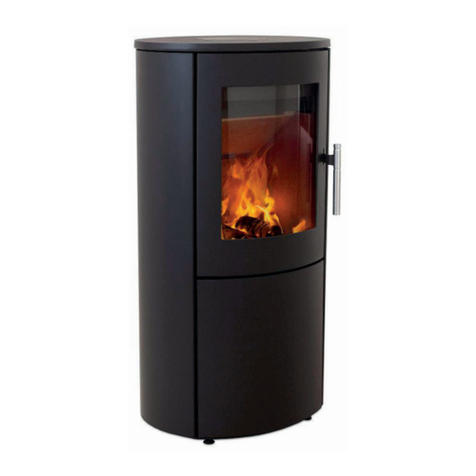
Heta
Heta Scan-Line 800 Series Operating and installation instructions

Primus
Primus Kinjia user manual
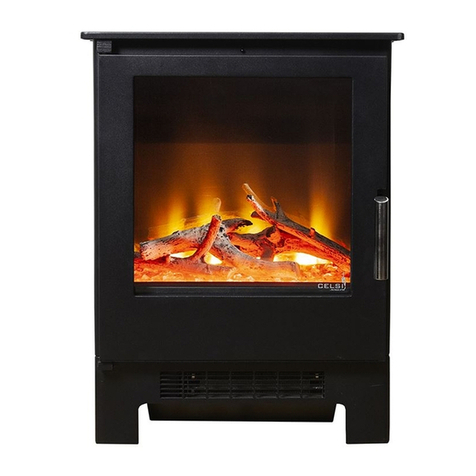
Celsi
Celsi Electriflame VR Arundel B-1009096 manual
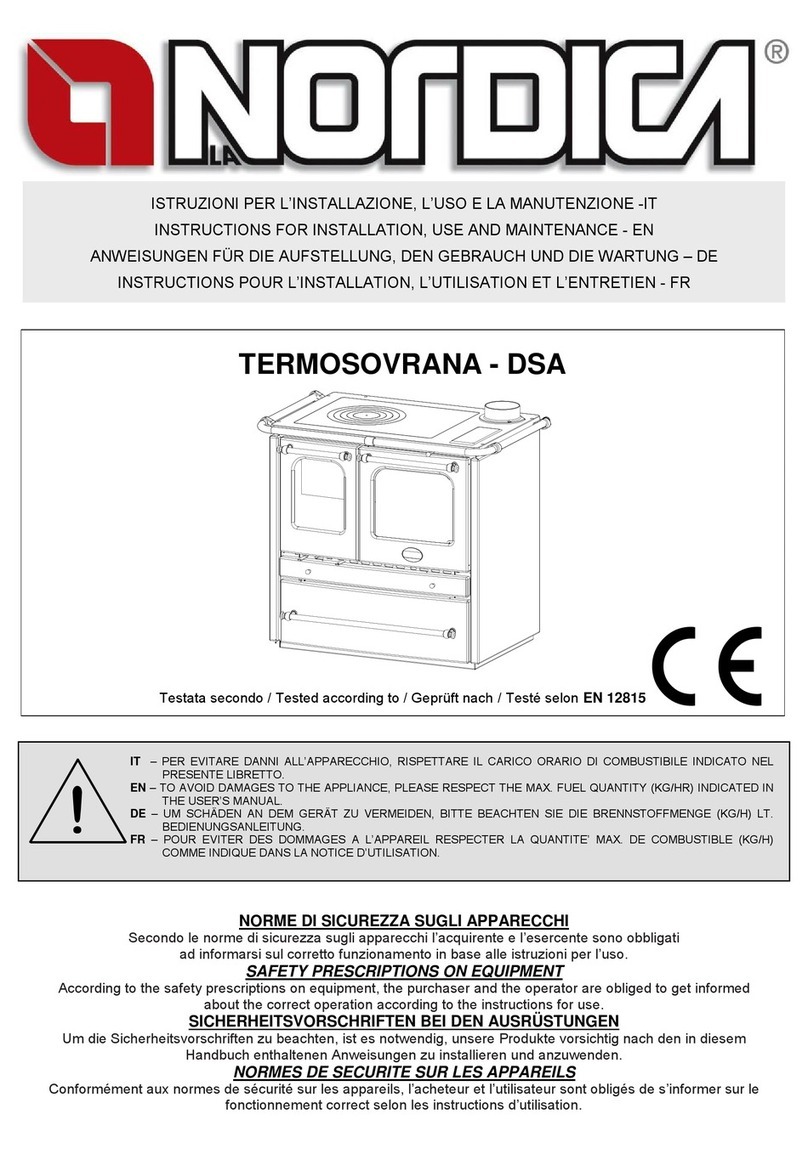
Nordica
Nordica TERMOSOVRANA DSA Instructions for installation, use and maintenance

Royal
Royal ROBERTA AIR 60-80 US PRODUCT TECHNICAL DETAILS
